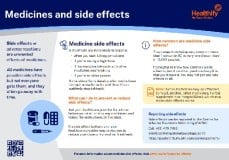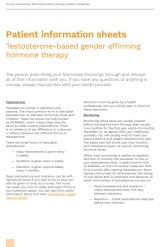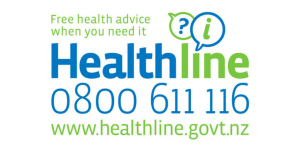Testosterone for gender affirming hormone therapy
Also known as T-GAHT
Key points about testosterone for gender affirming hormone therapy (GAHT)
- Testosterone can be used as part of gender affirming hormone therapy (GAHT).
- Testosterone is available as injections or gel that you apply to your skin.
- Find out more about testosterone for GAHT.

Testosterone-based gender affirming hormone therapy (T-GAHT) is used by some transgender and non-binary people to help align their body with their gender.
T-GAHT can be used by trans men or non-binary people for gender masculinising effects such as a deeper voice, increased growth of body and facial hair, body fat redistribution and increased muscle mass.
Testosterone is available as injections or gel
Your healthcare provider will discuss which form of testosterone is recommended for you based on your individual health history. Testosterone gel is applied to the skin. The injections, such as Depo-Testosterone, Sustanon and Reandron, are given into the muscle. You can be taught to self-inject Sustanon or Depo-Testosterone, but Reandron should be given by a healthcare provider.
To make sure T-GAHT is safe for you, tell your healthcare provider if you:
- have ever had any type of cancer
- have liver problems
- are or could get pregnant.
In Aotearoa New Zealand, testosterone is available as a gel that's applied to your skin. It's called Testogel® and is available in the 1.6% strength.
- Testogel comes in a container with a metered dose pump, which means that each pump gives the same amount of gel and the same dose.
- One pump gives 1.25 g of gel with 20.25 mg of testosterone.
Dose
- The starting dose is 1 pump applied once daily, preferably in the morning.
- Your healthcare provider will adjust your dose depending on your individual needs and blood levels. The usual dose is 2 pumps in 24 hours and the maximum dose is 4 pumps in 24 hours.
- Missed dose: If you forget to apply a dose, apply it as soon as you remember. If the next dose is almost due, then just apply 1 dose. Don't apply a double dose to make up for a forgotten dose.
- Learn more about how to apply Testogel.
Pros and cons of testosterone gel
- Pros: The gel must be applied consistently every day but it's quick to apply and dries relatively fast. Some people like this option as it avoids needles.
- Cons: Avoid washing the application area for a few hours after use – wait at least 1 hour after gel application before you have a bath, shower or swim. Testosterone may be transferred to others through skin-to-skin contact where you applied the gel. To avoid transfer to others, it's important to wash off before any skin-to-skin contact with others, such as your partner, children or pets.
Testosterone injections come in different brands and strengths
- In Aotearoa New Zealand examples of testosterone injections include Sustanon 250®, Reandron® and Depo-Testosterone®.
- These injections are intramuscular (IM) which means they are given into the muscle. Read more about intramuscular injections.
- Depo-Testosterone is given every 2 weeks, Sustanon is given every 3 weeks and Reandron is given approximately every 3 months.
- Your healthcare provider will advise you on the best dose for you. They will usually start you on a low dose and adjust your dose depending on the effects of the medicine and your hormone levels.
- You can give yourself Depo-Testosterone or Sustanon injections at home, or a healthcare provider can do it for you at the clinic. If you prefer to do it yourself, a healthcare provider can show you how to do it safely. Reandron injections are only given by a healthcare provider, so you'll need to visit the clinic for them.
- Sustanon injection is not suitable for people with a nut allergy.
Pros and cons of testosterone injection
- Pros: Depending on the type, injections can be fortnightly, or every 10 to 12 weeks. Some people like being able to self-administer their injections.
- Cons: Some people do feel anxious about having injections. Sustanon is not suitable for people with a nut allergy.
Your healthcare provider will arrange for you to have blood tests before you start treatment and during your treatment. This is usually 3 to 6 monthly for the first year and 6 to 12 monthly from then on (or as agreed with your healthcare provider). This is to check your red blood cell count, liver function and cholesterol levels, as well as monitoring hormone levels. You’ll usually need to have your blood pressure and weight checked once a year.
When starting testosterone therapy, it takes time for your testosterone levels to settle, so it’s usually not checked until 6 to 9 months after you start treatment. When it is time to test your testosterone, the timing of the blood test is important and depends on the type of testosterone you're using.
- Depo-Testosterone and Sustanon: Have your blood test halfway between injections.
- Reandron: Have your blood test just before your next injection.
T-GAHT can lead to gradual changes over many months and years. Effects vary for different people.
Permanent changes
- Increased hair growth on your body (chest, back, arms) and facial hair, although the amount varies from person to person.
- Deeper voice (this can start with a scratchy feeling in the throat).
- Hair loss at temples, possibly becoming bald with time depending on your age and family history.
- Genital changes which is the growth of erectile tissue (clitoris) around 1 to 3 cm. This can feel uncomfortable or even painful initially.
The following changes are not permanent
These changes will slowly reverse if you stop taking hormones.
- Oily skin and acne. Acne is usually at its worst during the first year, but it often gets better over time. If needed, you can talk to your healthcare provider about treatment options.
- Changes in body fat. Fat tends to decrease around the hips, butt, and thighs.
- Increased muscle and strength. You’ll likely notice more muscle, especially in your upper body.
- Higher sex drive. Many people experience an increase in libido.
- Periods usually stop within 1 to 6 months, though not for everyone. If you need help stopping it sooner, your healthcare provider can prescribe medication. Contact your healthcare provider if you notice any bleeding after your periods have already stopped.
Risk of pregnancy
Note: You could still become pregnant even if your periods have stopped. It's important to use contraception if you're having sex which could result in pregnancy because testosterone is harmful to a developing foetus.
Also note, anyone with a cervix should discuss cervical screening with their healthcare provider.
Common side effects
- Testosterone injections can sometimes cause pain or, in rare cases, infection at the injection site, but steps are taken to reduce this risk. Reandron may very rarely cause an oil embolism, which happens when a small amount of oil enters the bloodstream. Because of this, Reandron should only be given by a healthcare provider.
Other risks
The risk of health problems are higher if you smoke, are overweight or are over 45 years of age.
- There is a small increased risk of liver problems and raised cholesterol (these are both monitored on the blood tests).
- There is an increased risk of blood clots. Get immediate medical advice if you get pain, redness or swelling in one of your legs, usually in your calf. This could be a sign of deep vein thrombosis (DVT), a common sign of blood clots. There is a risk of a blood clot travelling to your lungs, so seek urgent medical advice if you experience shortness of breath or chest pain.
Transgender New Zealanders(external link) Health New Zealand | Te Whatu Ora
Testosterone-based gender affirming hormone therapy(external link) Primary Care Gender Affirming Hormone Therapy Initiation Guidelines, NZ
References
- Carroll R, Nicholls R, Carroll RW, et al. Primary care gender affirming hormone therapy (GAHT) initiation guidelines(external link) NZ, 2023
- Oliphant J, Veale J, Macdonald J, et al. Guidelines for gender affirming healthcare for gender diverse and transgender children, young people and adults in Aotearoa, New Zealand(external link) Transgender Health Research Lab, University of Waikato, 2018
Brochures

Medicines and side effects
Healthify He Puna Waiora, NZ, 2024
Credits: Healthify editorial team. Healthify is brought to you by Health Navigator Charitable Trust.
Reviewed by: Dr Rona Carroll, FRNZCGP, PGDip, Wellington
Last reviewed:






